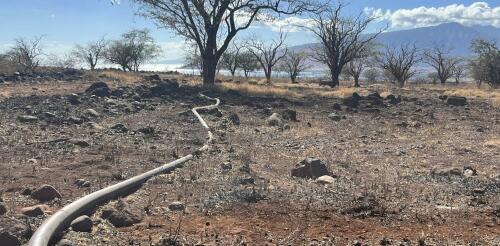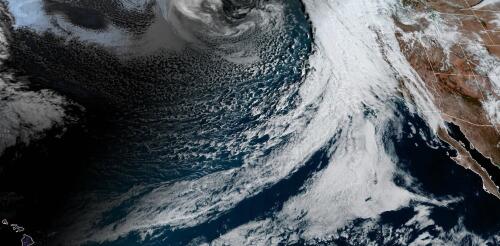Water supply
The wildfires that burned across Maui, Hawaii, in August 2023 became the deadliest conflagration in the United States in more than a century. While the harm to homes and tourism drew the most attention, agriculture was also heavily affected across the island, and the harm did not stop once the flames were out. In some cases, fires smoldered underground for weeks. Water systems were destroyed, and some were contaminated in ways scientists are only beginning to understand. Two weeks after the Maui fires began, they were still smoldering below ground. Andrew Whelton/Purdue University, CC BY-ND As an environmental engineer, I work with communities affected by wildfires and other disasters. I also led a team of university and public works professionals to assist in Maui’s response to the fires. In a new study based on that effort, my team worked with the Hawaii Department of Agriculture to assess d...
Climate change is threatening America’s water infrastructure as intensifying storms deluge communities and droughts dry up freshwater supplies in regions that aren’t prepared. Severe storms that swept through the South in April 2024 illustrated some of the risks: In New Orleans, rain fell much faster as the city’s pumps could remove it. A water line broke during the storm near Hattiesburg, Mississippi. Other communities faced power outages and advisories to boil water for safety before using it. We study infrastructure resilience and sustainability and see a crisis growing, particularly in the U.S. Southeast, where aging water supply systems and stormwater infrastructure are leaving more communities at risk as weather becomes more extreme. Neighborhoods across the New Orleans area flooded on April 10 as the region’s pumps couldn’t keep up with the rainfall. Credit: Reed Timmer. To find the best solutions and b...
Millions of Californians were under flood alerts as a powerful atmospheric river brought heavy rain to the West Coast in early February 2024. Los Angeles saw one of its wettest days on record with over 4 inches of rain on Feb. 4. Other communities were hit by more than 12 inches of rain and reported widespread flooding. Debris and mudslides shut down sections of highways and roads into Malibu. It was the latest in a series of atmospheric rivers to bring extreme rainfall to the West Coast. While these storms are dreaded for the damage they can cause, they are also essential to the region’s water supply, particularly in California, as Qian Cao, a hydrologist at the University of California, San Diego, explains. What are atmospheric rivers? An atmospheric river is a narrow corridor or filament of concentrated water vapor transported in the atmosphere. It’s like a river in the sky that can be 1,000 miles long. On average, atmospheric rivers have about twice the regul...
If you stand at practically any point on Earth, there is water moving through the ground beneath your feet. Groundwater provides about half of the world’s population with drinking water and nearly half of all water used to irrigate crops. It sustains rivers, lakes and wetlands during droughts. Groundwater is a renewable resource, but it can take decades or even centuries for some aquifers to recover after they are depleted. Current understanding of this challenge is based mainly on where and how frequently people record measurements of water levels in wells. In a newly published study, our team of data scientists, water specialists and policy experts compiled the first global-scale dataset of these levels. We analyzed millions of groundwater level measurements in 170,000 wells located in over 40 countries and mapped how groundwater levels have changed over time. Our study has two main findings. First, we show that rapid groundwater depletion is widespread around the worl...
A 23-year western drought has drastically shrunk the Colorado River, which provides water for drinking and irrigation for Wyoming, Colorado, Utah, New Mexico, Arizona, Nevada, California and two states in Mexico. Under a 1922 compact, these jurisdictions receive fixed allocations of water from the river – but now there’s not enough water to provide them. As states try to negotiate ways to share the decreasing flow, the U.S. Department of the Interior is considering cuts of up to 25% in allotments for California, Nevada and Arizona. The federal government can regulate these states’ water shares because they come mainly from Lake Mead, the largest U.S. reservoir, which was created when the Hoover Dam was built on the Colorado River near Las Vegas. These five articles from The Conversation’s archive explain what’s happening and what’s at stake in the Colorado River basin’s drought crisis. The Colorado River prov...




